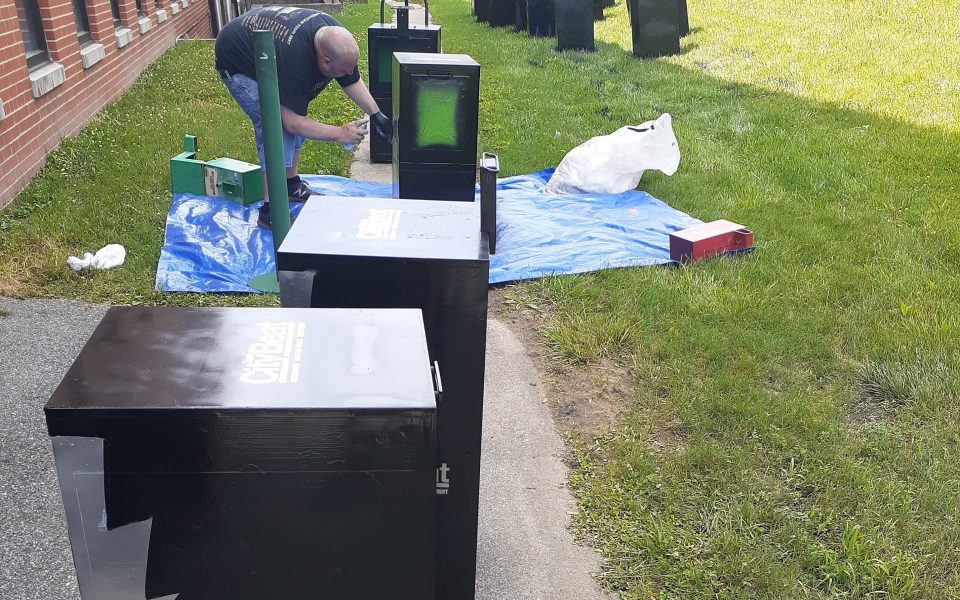
These boxes came down from Virginia, as-is. Some were rusted through; others arrived without key pieces of hardware like handles or plastic windshields, or the clip that holds that week’s newspaper in the window. Many were missing the spring-loaded mechanism that adjusts to the weight of the papers or, barring that, the metal grill that keeps them from dropping to the bottom. Some still had steel coinboxes attached, each one heavy as a cinderblock, with hard-to-reach bolts in cobwebby corners.
And by the end of the second day tending to them in the pre-summer sun, Triad City Beat Art Director Robert Paquette had turned red as a slapmark.
The last time we processed newspaper boxes in the office parking lot was all the way back in 2014, the year we began. I bought the first three from an old newspaper friend, Carolina-blue containers that had once held issues of the Daily Tar Heel. One of them, a rare double newspaper box, still stands outside the door of our office, one of its panels decorated with a self-portrait by the artist Patrick Harris.
I picked up another dozen that year from the News & Record back when they were still printing our paper in Greensboro, most of them oblong green ones from a failed magazine project called Skirt. Eric Ginsburg and I turned those around with a wire brush, some spray paint and a homemade stencil.
I gathered more over the next year from here and there, and then in 2015 came across the motherlode: 65 like-new metal newspaper boxes in a warehouse in Forsyth County, along with more than a hundred wire racks, detritus from a Spanish-language newspaper that went under 20 years ago. They were mine for the price of some advertising if I could bring a truck and cart them out of there.
Former TCB Art Director Jorge Maturino processed those over the course of a year, two and three at a time because that’s all he could fit in his car. I placed most of those on the street myself — I was still driving a weekly delivery route at the time, and I knew exactly where they needed to go.
We started doing this because I refused to pay full price for brand-new street boxes with slick wraps or professionally designed logos, which can go for $300 apiece. Why would I, when there were thousands of used ones just sitting around, and so many newspapers on the brink?
I understood then that we were building our media company on the ruins of those that came before us. Still feels about right.
Join the First Amendment Society, a membership that goes directly to funding TCB‘s newsroom.
We believe that reporting can save the world.
The TCB First Amendment Society recognizes the vital role of a free, unfettered press with a bundling of local experiences designed to build community, and unique engagements with our newsroom that will help you understand, and shape, local journalism’s critical role in uplifting the people in our cities.
All revenue goes directly into the newsroom as reporters’ salaries and freelance commissions.


Leave a Reply